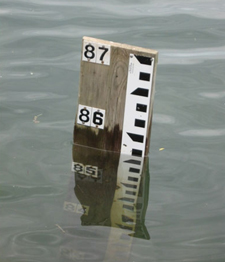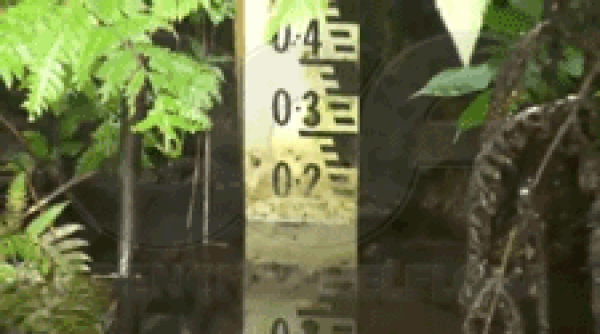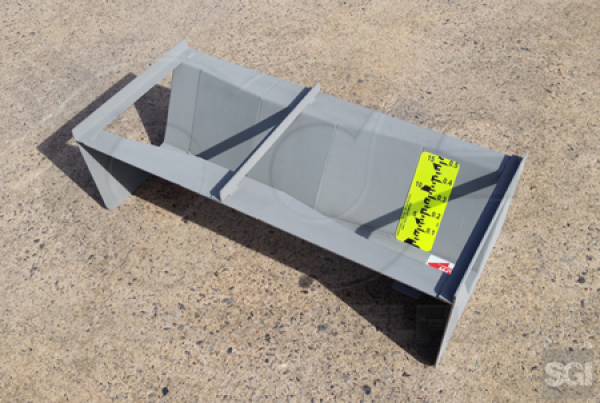This website uses a variety of cookies, which you consent to if you continue to use this site. You can read our Privacy Policy for
details about how these cookies are used, and to grant or withdraw your consent for certain types of cookies.
Considerations When Using Staff Gauges for Surface Water Monitoring
 In selecting a site to install a staff gauge for surface water monitoring, there are several factors to consider:
In selecting a site to install a staff gauge for surface water monitoring, there are several factors to consider:
Accessibility
Being able to get to a site and read (or maintain) the gauge is important. The location must be accessible but it should also be in the main flow of water. Avoid placing a staff gauge where water pools or where the flow is slow moving. Sediments and debris can collect around the gauge in these areas, hindering visual observations (and increasing maintenance).
Distance / Gauge Size
It stands to reason that the further away you are from a gauge, the harder it will be to read. The distance from the staff gauge to the observer can be critical to accurate stage measurement. Too small fonts can become unreadable surprisingly quick.
| Numerial Height | Viewing Distance |
| 5/16" | 7' |
| 1/2" | 12' |
| 3/4" | 18' |
| 1" | 25' |
| 1 1/2" | 36' |
| 2" | 49' |
| 3" | 74' |
| 4" | 113' |
| 6" | 150' |
| 9" | 300' |
Viewing Angle
Where practical, it is best to place a staff gauge where the user can look at it directly. Locations where the gauge is off angle to the user should be avoided as the operator may be prone to make reading errors when looking at the gauge from an angle
Surface Water Turbulence
For optimal accuracy, a staff gauge should be place in a stilling well when monitoring turbulent flows. Properly sized, the stilling well will dampen the surface turbulence that the main flow is experiencing while still allowing the staff gauge to reflect the water level in real time. Stilling well lag is to be avoided when at all possible.
Gauge Maintenance
Depending the application and gauge material, an installation may require more or less maintenance than usual. It is not uncommon for dirt, debris, or biological growth to accumulate on the staff gauge over time. Here, the accessibility of the gauge is important should cleaning / maintenance be necessary.
Related Blog Posts
Explore more insights in our blog.

LOCATIONS IN ATLANTA, GA & BOISE, ID




